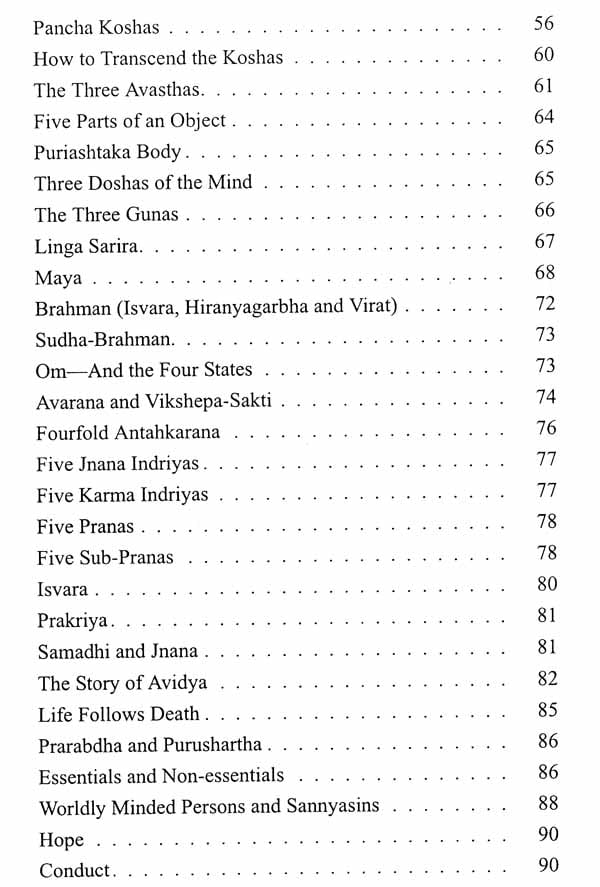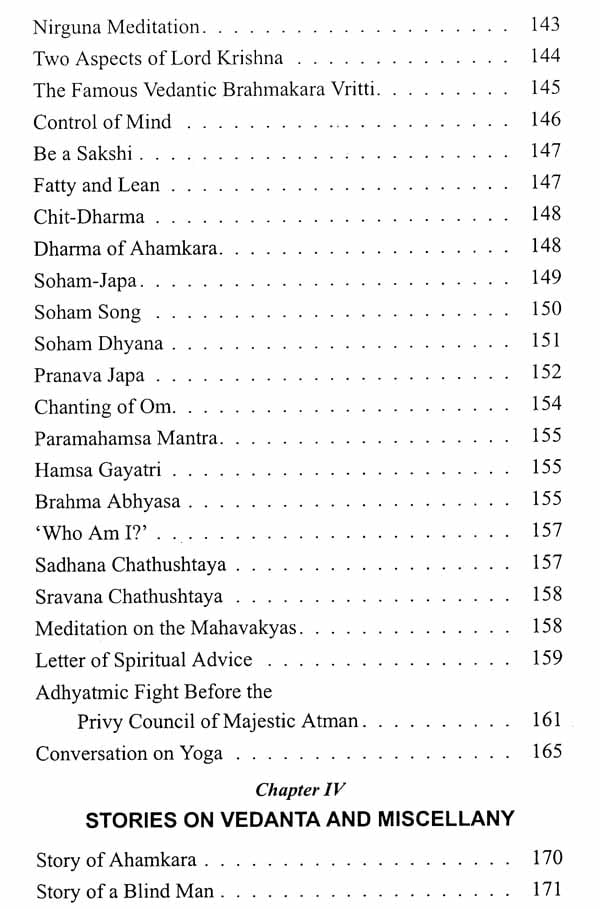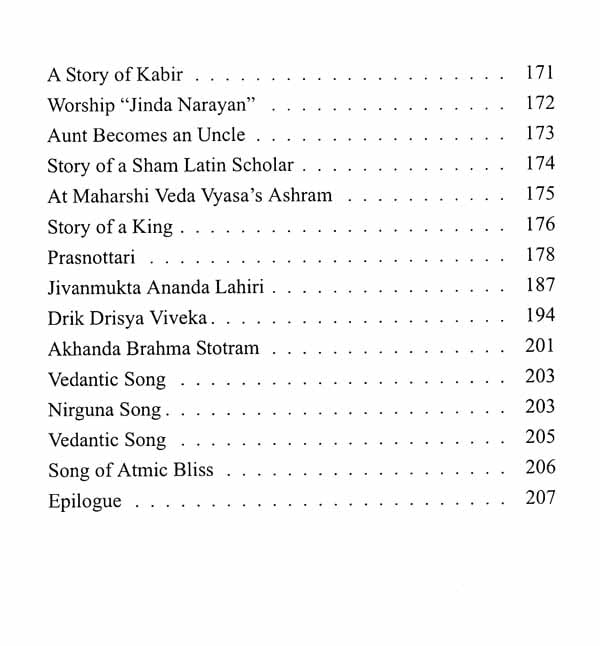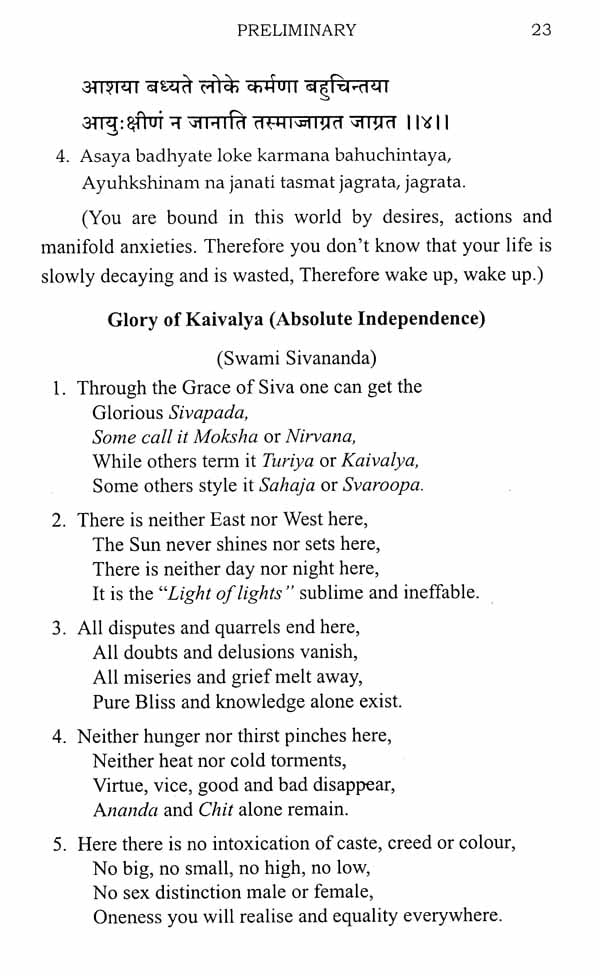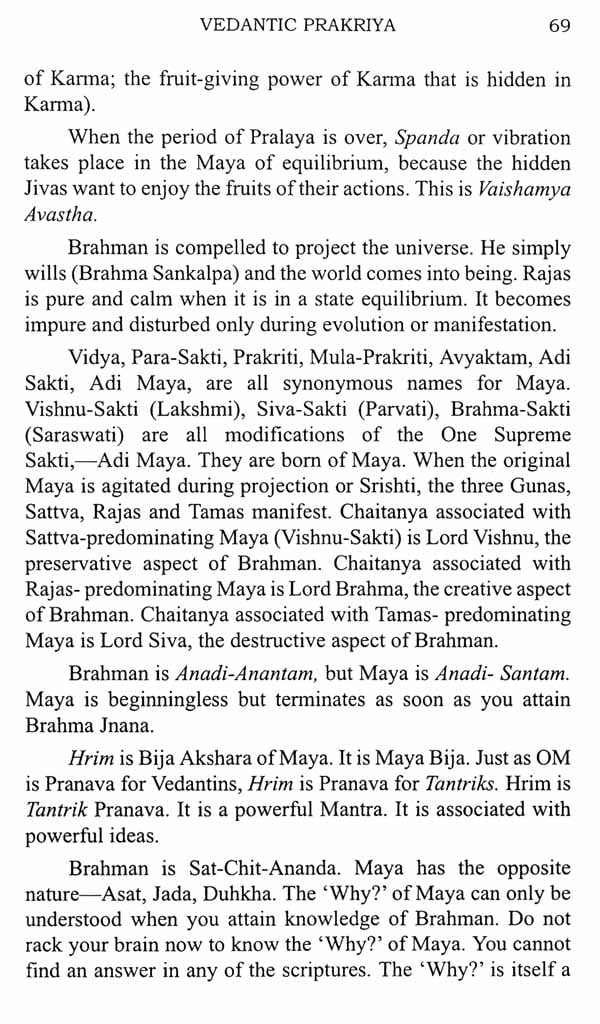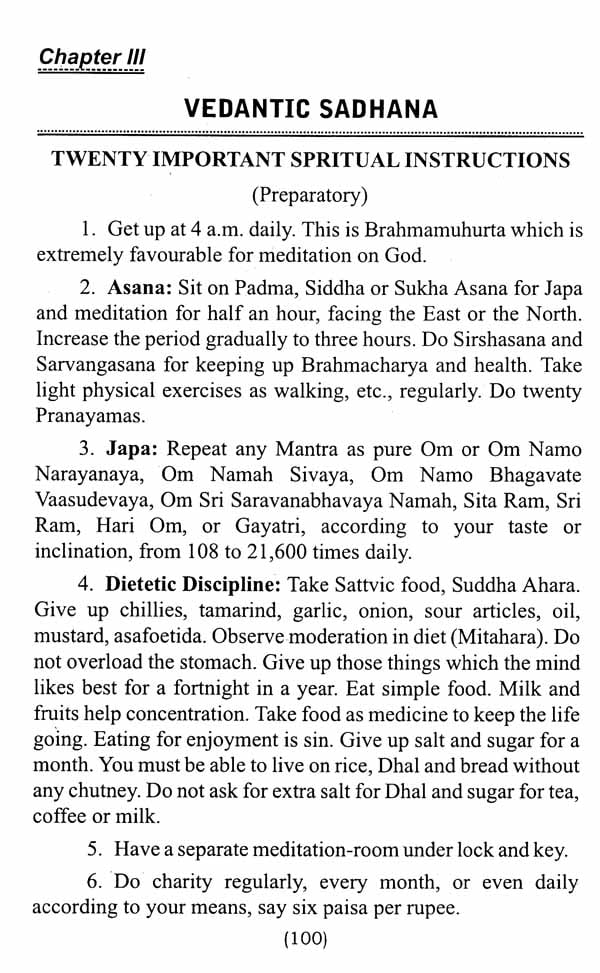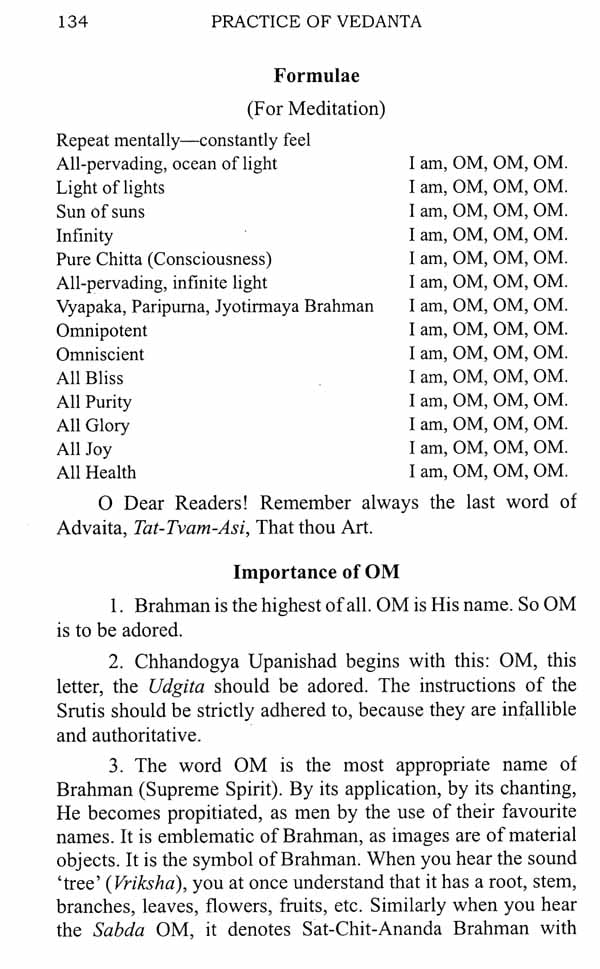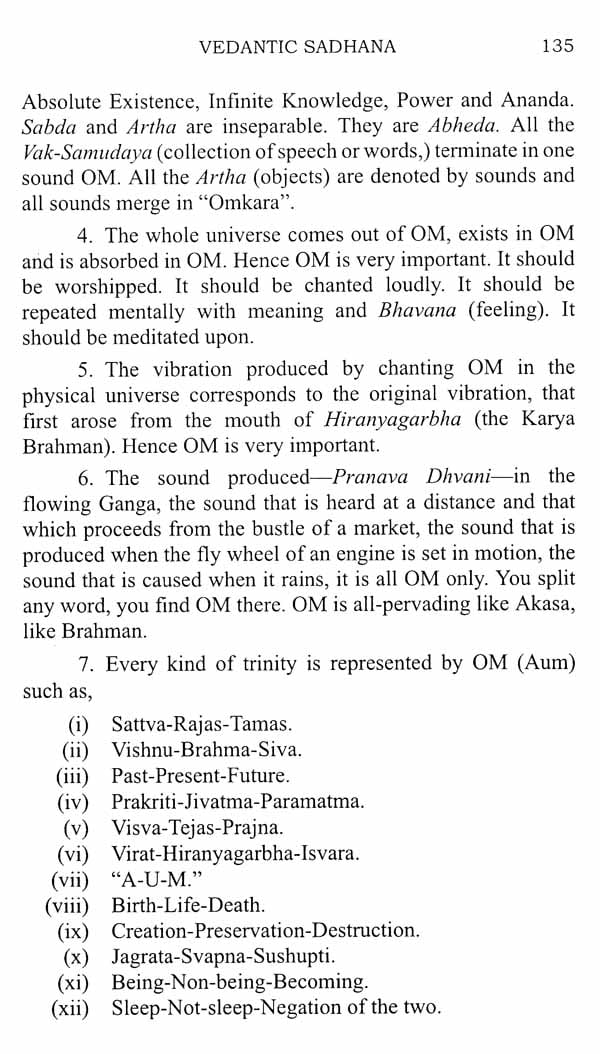
Practice of Vedanta
Book Specification
| Item Code: | NAZ229 |
| Author: | Swami Sivananda |
| Publisher: | THE DIVINE LIFE SOCIETY |
| Language: | English |
| Edition: | 2011 |
| ISBN: | 8170521912 |
| Pages: | 207 |
| Cover: | PAPERBACK |
| Other Details | 8.50 X 5.50 inch |
| Weight | 230 gm |
Book Description
Born on the 8th September, 1887, in the illustrious family of Sage Appayya Dikshitar and several other renowned saints and savants, Sri Swami Sivananda had a natural flair for a life devoted to the study and practice of Vedanta. Added to this was an inborn eagerness to serve all and an innate feeling of unity with all mankind.
His passion for service drew him to the medical career; and soon he gravitated to where he thought that his service was most needed. Malaya claimed him. He had earlier been editing a health journal and wrote extensively on health problems. He discovered that people needed right knowledge most of all; dissemination of that knowledge he espoused as his own mission.
It was divine dispensation and the blessing of God upon mankind that the doctor of body and mind renounced his career and took to a life of renunciation to qualify for ministering to the soul of man. He settled down at Rishikesh in 1924, practised intense austerities and shone as a great Yogi, saint, sage and Jivanmukta.
In 1932 Swami Sivananda started the Sivanandashram. In 1936 was born The Divine Life Society. In 1948 the Yoga-Vedanta Forest Academy was organised. Dissemination of spiritual knowledge and training of people in Yoga and Vedanta were their aim and object. In 1950 Swamiji undertook a lightning tour of India and Ceylon. In 1953 Swamiji convened a 'World Parliament of Religions'. Swamiji is the author of over 300 volumes and has disciples all over the world, belonging to all nationalities, religions and creeds. To read Swamiji's works is to drink at the Fountain of Wisdom Supreme. On 14th July, 1963 Swamiji entered Mahasamadhi.
I am not going to write an elaborate preface. I do not want it. My Practice of Yoga which was published in 1929 has received a very warm reception. It has miraculously stirred thousands to do some sort of spiritual practice or other. One reader writes to me: "It is a second Gita to me." Another writes: "The power and beauty of your book, spoken so freely from your heart has marked an epoch on the path for me. It has made all things seem easier and possible to me. What more can a Teacher desire in such a book? May God bless you and your great race and India." I have received a thousand and one letters of appreciation from different corners.
I come to understand that there are very many souls who are really thirsty after spiritual knowledge. This has stirred me to place another book on Vedanta before the public. This book contains many valuable practical instructions. Many kinds of Vedantic Sadhana are lucidly described. It contains the gist of Vedanta. It gives Vedanta to the readers in a nutshell. The vast majority of persons have no time to go through the different books on Vedanta. A book of this kind will prove to be a constant companion to them, a vade mecum, a hand-book or manual for ready reference.
The abstruse philosophical ideas of Vedanta are given in a sugar-coated, compressed tablet form to the readers for easy assimilation. They will not get mental dyspepsia. The various illustrations (Drishtanta), anecdotes, stories, similes and analogies have made the subject very, very clear and interesting.
I have to express my keen sense of gratitude to H. H. Sri Swami Atmananda Saraswati of Omkar Kutia, Rishikesh, and Sri Swami Swarupananda, for their prompt and kind help in the arrangement of this book.
Some of the articles of this book appeared in the monthly journal-"The Message". They are reprinted here with modification and amplification. Grateful acknowledgments to the Editor, Sri Swami Sadanandaji.
Whatever is, is in reality One. There truly exists only one Universal Being, called Brahman or Paramatman, the Highest Self. This Being is of an absolutely homogenous nature (Eka-rasa). It is pure 'Being', or which comes to the same, pure intelligence-(Chaitanya Jnana). Intelligence is not to be predicated of Brahman as its attribute but it constitutes its substance (Svaroopa or essence). Brahman is not a thinking Being, but 'Thought' itself. He is absolutely destitute of qualities. Whatever qualities or attributes are conceivable, can only be denied of it. But if nothing exists but one absolutely simple Being, whence the appearance of the world, by which we see ourselves surrounded, in which we ourselves exist, as individual beings? Brahman is associated with a certain power called Maya, to which the appearance of this entire world is due.
The non-enlightened soul is unable to look through and beyond Maya, which like a veil, hides from its true nature. Instead of recognising itself to be Brahman, it blindly identifies itself with its adjuncts (Upadhis), the fictitious offsprings of Maya, and thus looks for its true self in the body, the sense-organs, and the internal organs (Manas or Antahkarana, or mind, the organ of specific cognition).
The soul, which in reality, is pure intelligence-(Chaitanya), non-active (Nishkriya) and infinite (Bhuma), thus becomes limited in knowledge and power, an agent and an enjoyer. Through its actions it burdens itself with merit and demerit, the consequences of which it has to bear or enjoy in series of future embodied existences.
Oh! How deep, unfathomable and marvellous is this Maya, the inscrutable power of Brahman! Every human being, though really in essence he is Brahman, does not, though instructed, grasp the Truth 'I am Brahman', but feels convinced, without any instruction that he is such a person's son mistaking for the pure Atman, the combination of the body and the senses, etc., which is not the Atman and is only perceived like a stone or a pot. Indeed, these worldly-minded persons wander in this miserable Samsara repeatedly deluded by Maya of Brahman alone.
But the wise man with the 4 means of salvation hears the Srutis, reflects and meditates on the meaning of the Mahavakya, Aham-Brahma-Asmi or Tat-Tvam-Asi and eventually gets established on Advaita Kaivalya-Nishta. He becomes a Jivanmukta and crosses beyond the ocean of Samsara. Hail! Hail! to such Jivanmuktas. May their blessings be upon you all.
**Contents and Sample Pages**

